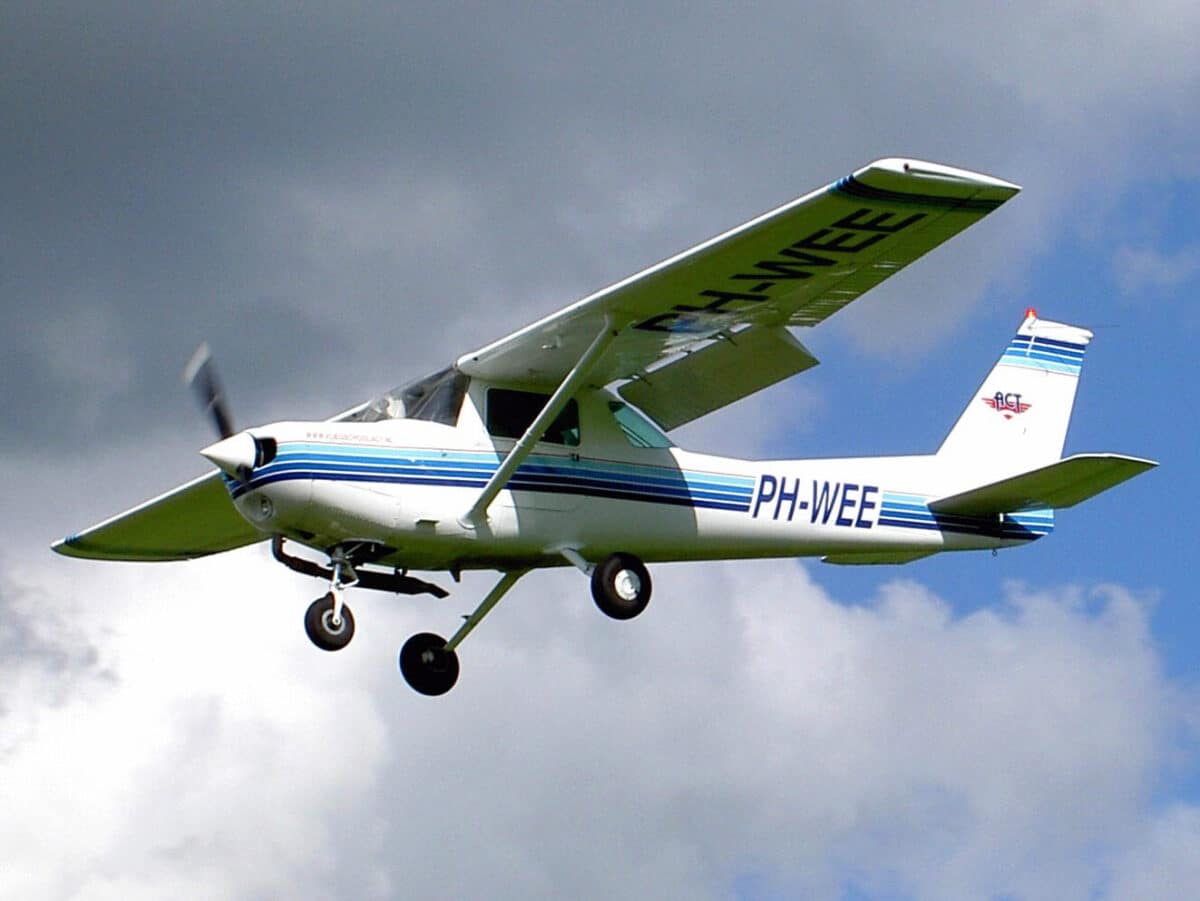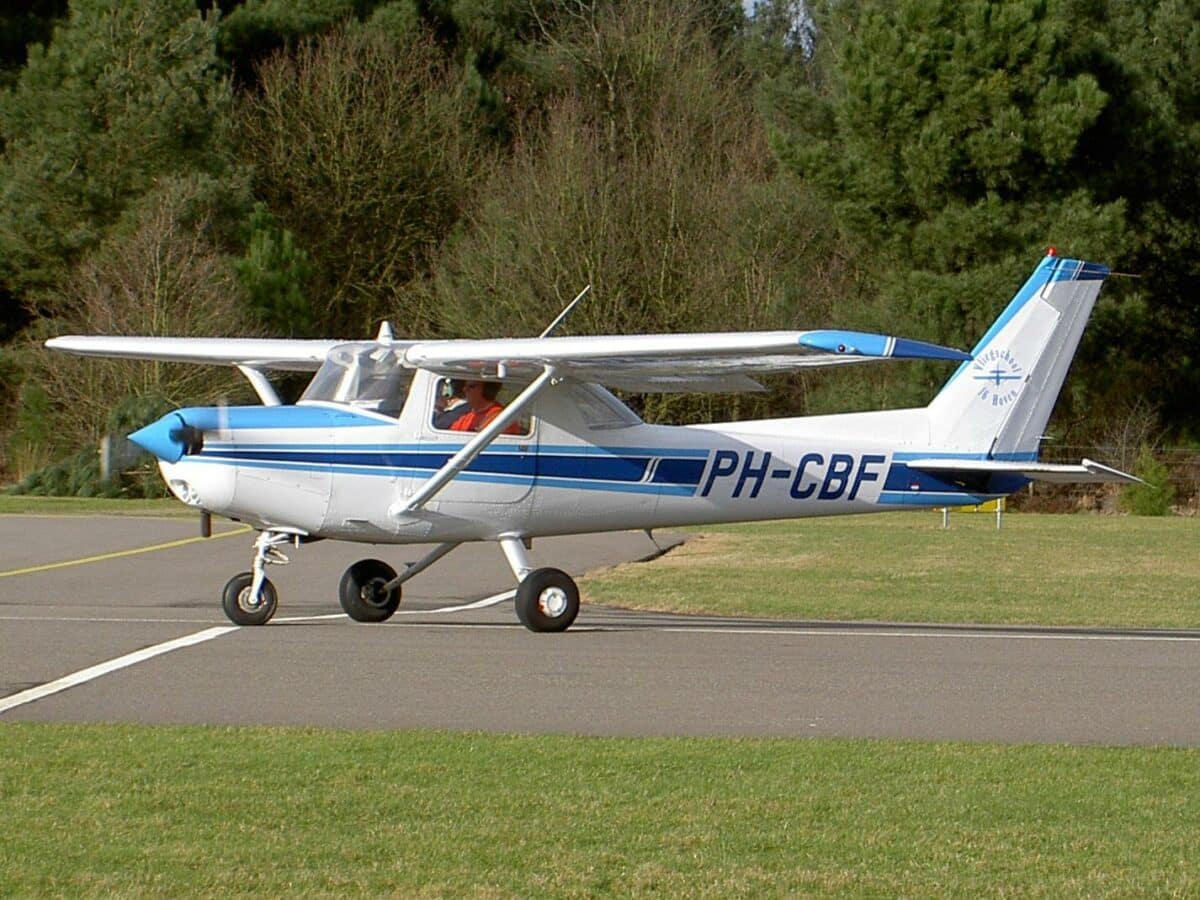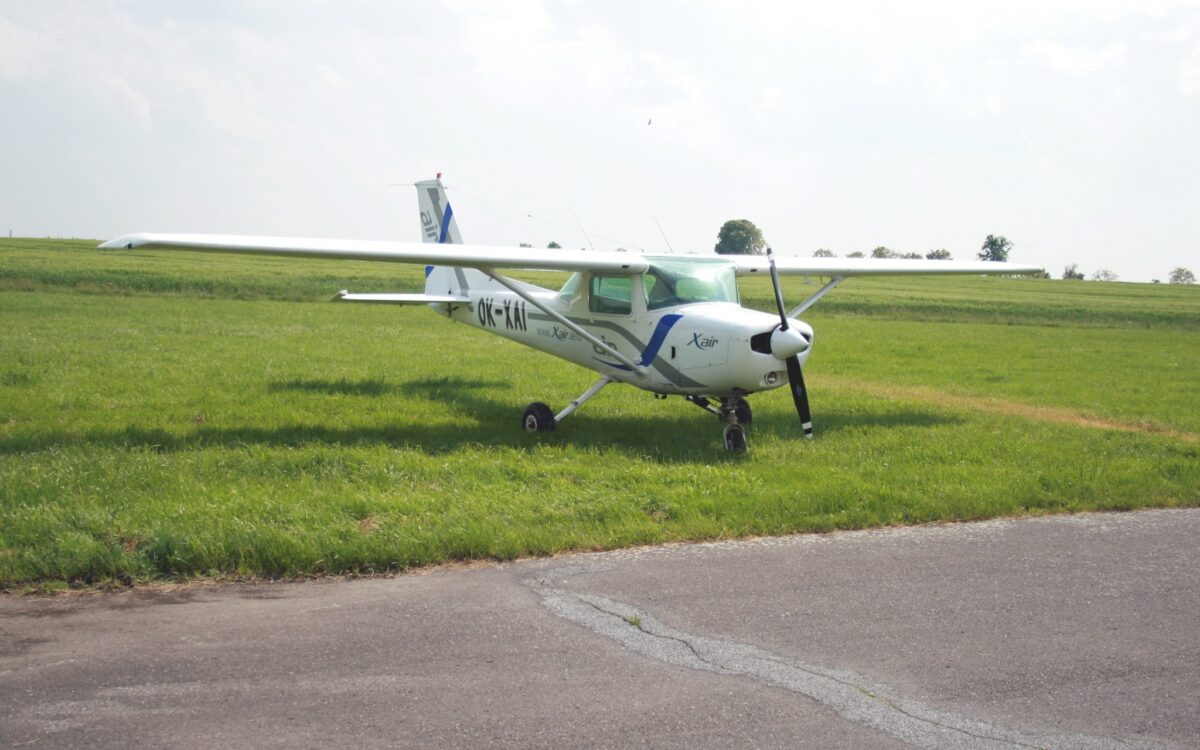The Cessna 152, a staple in the single-engine, piston-powered airplane realm, holds a special place in the hearts of aviation enthusiasts. For those intrigued by the prospect of owning this classic aircraft, understanding the financial commitment is crucial. The market for used Cessna 152s, with production years spanning from 1978 to 1983, presents a price range of approximately $48,000 to $95,000.
But purchasing the plane is just the beginning. Annual ownership costs—sans depreciation—accumulate to roughly $10,375, covering insurance, maintenance, and hangar fees. For pilots planning to log around 100 flying hours per year, the variable cost per hour hovers around $40. Whether you’re an aspiring pilot or a seasoned aviator, these figures offer a tangible glimpse into the investment required to take the reins of the venerable Cessna 152.

Table of Contents
Why the Cessna 152 is a Great Plane
The Cessna 152 is often the top choice for newly certified private pilots due to its relatively affordable price, fuel efficiency, and effortless handling.The Cessna 152 is an exceptional aircraft known for its ability to carry up to two passengers, including the pilot.
In this article, we will discuss the total cost of ownership and explore various financing options for purchasing a Cessna 152. Our article on small aircraft buying recommendations provides valuable insights.
Cost of Purchasing a Cessna 152
For those on a budget, a well-maintained used Cessna 152 can be found within the $48,000 to $95,000 price range, particularly for models produced between 1978 and 1983. Prospective buyers can make a well-informed decision and find the perfect Cessna 152 to suit their needs.
The Cessna 152 is an incredibly popular aircraft due to its affordability, reliability, and long history on the market. Since its launch in 1977, the Cessna 152 has been widely available, with a vast number of units produced and circulated.
As a result, you can easily find a decent condition Cessna 152 for around $48,000, although prices may vary depending on factors such as age, condition, and location. Keep in mind that these aircraft tend to sell quickly once they’re listed.

Ownership Costs of a Cessna 152
Owning a Cessna 152 involves more than just the initial purchase price. You need to be prepared for the ongoing fixed and variable running costs associated with operating and maintaining the aircraft.
Expect an annual total cost of ownership of around $10,375. This figure includes fixed costs, such as insurance and hangar fees, amounting to approximately $3,575, as well as variable costs, like fuel and maintenance, estimated at around $6,800 (based on 100 annual flying hours).
Depreciation costs are also a factor to consider, though these are difficult to estimate due to various influencing factors.
At PilotPassion, our mission is to provide you with the most interesting and relevant aviation content. As aviation enthusiasts and student private pilots ourselves, we understand your needs and concerns. We have carefully curated this information on the costs associated with owning and operating a Cessna 152, putting ourselves in your shoes to ensure that the content is accurate, valuable, and saves you time and effort.
Owning an airplane, such as a Cessna 152, comes with numerous fixed and variable expenses that beginners might not be familiar with.
This applies to all types of aircraft, whether new or used. If you’re purchasing your Cessna outright, you don’t need to worry about financing fees. However, if you’re taking out a loan, remember to factor in interest repayment costs.
What Are the Fixed Costs for Cessna 152 Ownership?
Fixed costs of aircraft ownership are the expenses you’ll incur regardless of whether you operate the aircraft or not. Even if your Cessna 152 remains grounded, you’ll still have to cover certain fixed expenses. These include:
– The one-time purchase price
– Hangar fees at the aerodrome
– Insurance costs
– Annual inspection fees
The total fixed costs for a Cessna 152 amount to approximately $3,575. You should consider the depreciation of your aircraft value as an asset. As there are many variables involved in calculating depreciation, such as age, initial cost, resale value, and market conditions, we are unable to provide an accurate figure.
To pass the annual inspection, you may also need to cover required maintenance expenses. While some people categorize these costs as variable, they should generally be considered fixed, as you’ll likely need to pay for them regardless of your aircraft’s usage.
You may have other regular subscription fees, such as weather services or ForeFlight, that contribute to the overall fixed costs.
Hangar Costs for a Cessna 152
Hangar costs for a Cessna 152 can vary significantly based on factors such as location and the type of storage facility you choose to rent.
In the US, hangar spaces are available for as low as $70 per month, although it’s worth considering the benefits of investing in a more comprehensive facility for added security and amenities. Aside from renting, you may also have the option to build or purchase your own hangar.
How much does insurance cost for a Cessna 152?
Contrary to what one might assume, insurance costs for owning and operating a Cessna 152 are relatively affordable. Similar to hangar costs, insurance rates can differ depending on factors like your location, frequency of flights, aircraft value, and type of coverage.Insurance pricing for aircraft can vary significantly due to numerous factors.
To find the best rate, it’s essential to shop around, keeping in mind that lower rates often only provide liability-only coverage. This type of insurance will not cover damage or loss to the aircraft itself but will protect against damage or injury to third parties. The primary determinant of insuring a Cessna 152 is its valuation.
For a used Cessna 152, insurance costs are approximately $1,000 per year.
How much is an annual inspection for a Cessna 152?
The Federal Aviation Administration (FAA) mandates that aircraft undergo an annual inspection each year. The cost for a Cessna 152 annual inspection is roughly $850.
It’s crucial to ensure that all parts are functioning correctly and that oil and other fluids are topped up as needed. Considering the annual inspection and other fixed maintenance costs, you can expect to spend around $3,575 per year on your Cessna 152.
What Are the Variable Costs for Cessna 152 Ownership?
Owning a Cessna 152 comes with various variable costs, such as fuel, oil, unscheduled maintenance, and miscellaneous expenses like landing fees, parking, and minor travel costs.
On average, these costs amount to approximately $6,800 per year. The hourly variable expense for flying a Cessna 152 is roughly $68. However, it’s essential to note that these figures are only estimates, as individual experiences may differ.
Over time, as you continue to own and operate the aircraft, annual variable costs tend to increase. Unlike fixed costs, variable costs are incurred only when the plane is actually in use.
Cessna 152 Fuel Costs
The Cessna 152 operates on aviation gasoline (avgas), which costs approximately $5 per gallon. Given the plane’s fuel consumption rate of 7.0 gallons per hour, a one-hour flight costs about $40 in fuel expenses. It’s worth exploring various airports for their avgas prices, as rates may vary depending on location and traffic.
Cessna 152 Oil Maintenance
For those with technical prowess, taking care of oil changes yourself can significantly reduce labor expenses associated with Cessna 152 maintenance.Otherwise, you’ll need to cover the expenses for labor, oil, and filters yourself. I’ve calculated the oil cost for a Cessna 152 is typically around $3 per running hour.
Cessna 152 Engine Maintenance Costs
Every 2,000 hours, the engine of a Cessna 152 requires an overhaul. An airplane engine overhaul can become quite costly, depending on factors such as the engine’s condition, age, and hours of operation. However, safety is of utmost importance, making this a necessary procedure.
During the overhaul, the engine is disassembled, and each component is meticulously inspected, including pistons, bearings, cylinders, and other engine parts. This process ensures optimal performance and prolonged lifespan for the aircraft’s engine while maintaining safety standards.
Maintenance is performed as needed, with engine overhauls required more frequently as flight hours accumulate. We’ve covered fixed and variable costs – now let’s discuss how to make purchasing a Cessna 152 more manageable!

Financing Options for Purchasing a Cessna 152
There are several financing options available for purchasing a Cessna 152, as I have learned from friends who own this type of aircraft. One option is to secure a loan from a bank or other financial institution.
Alternatively, you can consider leasing the aircraft, which allows you to use it for a predetermined period before returning it or potentially purchasing it at the end of the lease. You might explore the possibility of co-owning a Cessna 152 by purchasing a share in the aircraft alongside a small, trusted group of individuals.
When considering the purchase of a Cessna 152, it is essential to thoroughly review all terms and conditions prior to signing any agreements. Gaining a comprehensive understanding of the full terms and potential costs involved is crucial.
Taking out a loan for a Cessna 152
One option for financing your Cessna 152 is to apply for a conventional loan from a bank or credit union. If you possess a high credit score and a strong financial history, this may be an advantageous choice.
Alternatively, you may consider applying for a loan specifically designed for aircraft financing. These loans often provide more flexible terms and may be more accommodating to those with less-than-perfect credit.
Practical advice: Before selecting a lender, it is advisable to research and compare rates and terms from various lending institutions. Be sure to carefully assess your financial situation to ensure that you can comfortably manage the loan repayments.
Leasing
If you’re not ready to commit to purchasing an aircraft outright, leasing a Cessna 152 can be an accessible and affordable financing solution. By leasing a plane, you agree to use it for a predetermined period—usually several years—in exchange for a fixed monthly payment.
At the end of the lease, you have two options: return the aircraft to the owner or purchase it for a predetermined amount. You can choose between wet leases (which include a pilot) and dry leases (just the aircraft). Most individuals opt for the dry lease option.
It’s essential to thoroughly research and compare lease options from different providers to ensure you find the best fit. Leasing agreements often involve substantial paperwork, so be sure to read the fine print carefully. As with loans, consider your ability to make payments throughout the entire lease period.
Buying a Share in a Cessna 152
Purchasing a share in a Cessna 152 enables you to co-own and operate the aircraft alongside other owners. This co-ownership option may be a practical alternative to full ownership or long-term leasing for those who require regular access to an aircraft.
Fractional ownership, also known as shared ownership, is a popular and cost-effective approach to owning an aircraft. This ownership model requires an initial investment for purchasing a share in an aircraft, along with ongoing maintenance and operational costs.
Often facilitated through local flying clubs, fractional ownership allows individuals and organizations to experience the benefits of owning an airplane without bearing the full financial burden.
Many people first learn about fractional ownership by acquiring a share in a Cessna 152 through these flying clubs. This method offers an affordable opportunity for those who wish to fly for personal or professional purposes but lack the resources or necessity to own an aircraft outright.
Additionally, it serves as an attractive alternative for companies requiring frequent access to an airplane without taking on full ownership responsibilities.
Fractional ownership provides the advantage of dividing the initial aircraft purchase price, maintenance, and operational expenses among multiple owners. The extent of each owner’s access and maintenance responsibility depends on the size of their individual shares.
Consequently, this approach ensures a more manageable and cost-effective aircraft ownership experience while maintaining the convenience and flexibility of having access to an airplane.
Cessna 152 Specifications
Manufacturer: Cessna Aircraft Company Model: Cessna 152 First flight: 1977 Production years: 1977-1985 Role: Light, single-engine piston aircraft, primary trainer Seating capacity: 2 passengers (including pilot) Engine: 1 x Lycoming O-235-L2C air-cooled, horizontally-opposed piston engine Horsepower: 110 hp (82 kW) Wingspan: 33 ft 4 in (10.16 m) Length: 24 ft 1 in (7.34 m) Height: 8 ft 6 in (2.59 m) Maximum speed: 126 mph (203 km/h) Cruise speed: 110 mph (177 km/h) Range: 480 miles (772 km) Service ceiling: 14,700 ft (4,481 m) Rate of climb: 715 ft/min (3.63 m/s) Wing loading: 11.6 lb/ft² (56.7 kg/m²) Power/mass: 0.12 hp/lb (0.20 kW/kg) Fixed tricycle landing gear configuration Known for: Improved performance over the Cessna 150, reliability, and its role as a popular flight training aircraft
Final Thoughts
Owning a Cessna 152, or any aircraft for that matter, can incur significant expenses. However, it all depends on your perspective and financial capabilities. If you have a passion for aviation and can comfortably afford it, then the investment is undoubtedly worthwhile. In comparison to other aircraft, the Cessna 152 proves to be relatively economical.
Upon calculating the expenses, the total running cost for a Cessna 152 amounts to approximately $103 per hour, encompassing both fixed and variable costs. The variable expenses, including fuel, oil, and maintenance, come to about $68 per hour.
For many newly certified private pilots, renting a Cessna 152 is a more financially viable option. Regardless of your choice, we hope this article has been informative, and we wish you safe and enjoyable flying experiences!